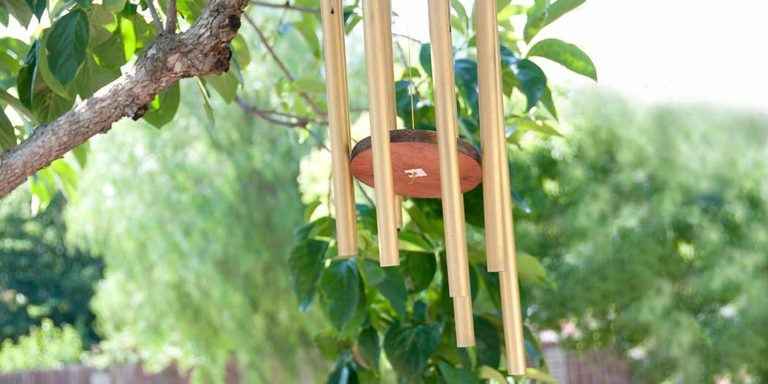How Does a Wind Chime Work? (From Wind Gusts to Relaxing Sounds)
The beauty of wind chimes is pretty hard to deny. Many of the most popular types of wind chimes are made to have great aesthetic appeal.
Chimes look gorgeous hanging in a window or tree. There are many ways to place wind chimes in your house. They can create beautiful sounds that help to soothe you as well.
Many people see wind chimes as an ideal decoration that will suit any type of home. They look great and bring happiness to people, making them very practical for just about anyone.
Even so, some people wonder exactly how these wind chimes work.
- The tubes or rods are suspended from a central point, usually by a string or wire.
- When a gust of wind blows, it causes the tubes to move and collide with each other, creating sounds.
- The length and thickness of the tubes and the material they are made of determine the pitch and tone of the sound produced.
- Wind chimes are often used as decorative outdoor ornaments and are believed to bring good luck and positive energy.
If you have never really sat down and thought about it before, then it is understandable why you may not understand the intricacies of the wind chime.
The Wind Makes Them Work
Of course, the short answer to how wind chimes work is going to involve the wind.
The wind blows, and it causes the chimes to move around. They will then make pleasing sounds, almost music, that you can enjoy on a windy day.
People love placing these in their windows for this reason, but there is more to consider than just the wind. Other factors contribute to making these chimes work and will play a role in how the chimes sound.
The Materials Make a Difference
The materials that the wind chime is made out of is going to make a difference. Most wind chimes that you will buy in modern times are going to be made out of some type of metal.
Aluminum and copper are among the most common metals used to make wind chimes.
Wind chimes can also be made out of other materials such as wood, glass, or even seashells.
Different materials are going to make different sounds when they move around.
The sound of a glass wind chime is going to differ from the sound of a metal wind chime. To get the sound that appeals to you the most, it may be a good idea to test out several types of wind chimes.
This will allow you to hear the distinct sounds that each style is going to make.
The Length of the Tubes Plays a Role as Well
The length of the tubes is going to play a role in producing the sound as well.
For example, a tube that is shorter and narrower is going to produce higher pitches than a tube that is longer and wider.
This is all very sensible, but you will need to play around with it to find the right sound that you want.
Some wind chime manufacturers make their chimes with a precise length and width to produce a pleasing sound.
The tubes or rods are suspended from a central point, usually by a string or wire.
The length of the string or wire affects how far the tube hangs, affecting how much it swings.
Over time, wear and tear can cause strings to stretch and break. You can get the wind chime back in working order by restringing it.
Summing-up
Wind chimes made of different material create different noises. For example, wooden chimes will sound hollow, and hells will create a tinkling sound that is relatively even in tone. You should buy one with that in mind.
The price of wind chimes can vary broadly online. Usually, the more valuable the wind chime, the more long-lasting it is and the more pleasing sound it has.

